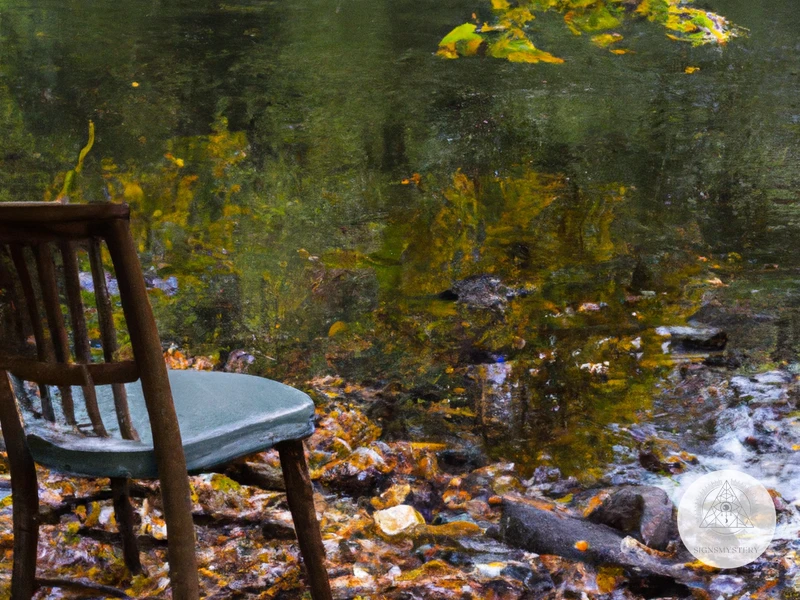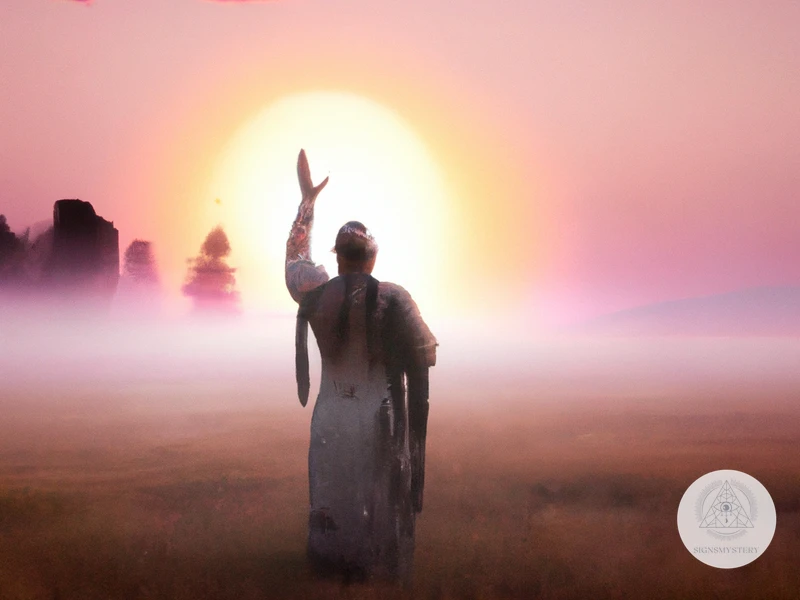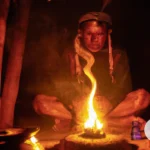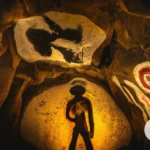It’s never easy to deal with the loss of a loved one. The pain of grief can be overwhelming, and it can be hard to find a way to cope and move forward. This is where Shamanic Approaches for Grief and Loss: Honoring the Dead comes in. Shamanism is a spiritual practice and way of life that has been used by cultures around the world for centuries to help people deal with the challenges of life, including grief and loss. In this article, we will explore the different shamanic traditions and techniques that you can use to cope with your grief and honor the memory of your loved ones. From creating a sacred space for mourning to making offerings to ancestor spirits, we’ll cover everything you need to know about shamanic approaches for grief and loss.
Understanding grief and loss

Grief and loss are normal emotional responses to significant life changes such as death, divorce, illness, or other major losses. It is important to recognize that every individual grieves differently and there is no “right” way to approach this process. However, understanding the different stages of grief as identified by Kubler-Ross (denial, anger, bargaining, depression, and acceptance) can be helpful in navigating the complex emotions and thoughts that arise. It is also important to note that grief can have a significant impact on our physical and mental health, leading to symptoms such as insomnia, loss of appetite, anxiety, and depression. Incorporating shamanic approaches such as healing shamanic journeying or shamanic healing for trauma and PTSD, as well as other forms of therapy and self-care, can be beneficial in coping with grief and honoring the dead.
Grief as a normal emotional response
Grief is a natural and normal emotional response to loss and is an essential part of the healing process. It can be triggered by many types of loss such as the death of a loved one, divorce, or the loss of a job. It is a complex emotional state that can result in a range of physical and emotional symptoms. In this section, we will discuss in detail the normal emotional responses to grief.
Normal Emotional Responses to Grief
| Emotion | Description |
|---|---|
| Shock and Denial | Feeling numb, disbelief, and denial. This initial emotional response is the mind’s way of protecting itself from the overwhelming emotions of grief. |
| Pain and Anger | A feeling of intense pain and a desire to lash out or blame others for the loss. This stage can be characterized by irritability, frustration, and anger. |
| Bargaining | Trying to negotiate or “bargain” with a higher power, hoping that the loss can be reversed. This stage is often marked by feelings of guilt and regret. |
| Depression | A deep sense of loss and sadness that can lead to feelings of hopelessness, worthlessness, and even suicidal thoughts. This stage is an essential part of the grieving process, and it is important to get help if the depression persists. |
| Acceptance | Coming to terms with the loss and starting to move on. This stage is characterized by a sense of peace and an ability to look towards the future. |
It is essential to understand that grief is a normal emotional response to loss and that there is no “right” way to grieve. Each individual’s grief experience is unique and personal. Some people may experience intense emotions, while others may appear to move through the stages of grief more quickly. It is important to give oneself permission to grieve in one’s own way at one’s own pace.
While grieving, it is crucial to take care of oneself physically and emotionally. This may include getting enough sleep, eating well, and seeking support from friends and family or a professional counselor. Additionally, incorporating shamanic healing practices into a self-care routine can help individuals experiencing grief and loss to find comfort and healing.
In the next section, we will explore shamanic perspectives on death and dying. For those interested in further exploration of shamanic practices related to grief and loss, we recommend the article on shamanic practices for addiction recovery.
The different stages of grief
Grief is a natural process that follows the loss of a loved one or something of value. The process is different for everyone, but most people go through several stages of grief before coming to terms with their loss. Psychiatrist Elisabeth Kubler-Ross identified five stages of grief that are often experienced by people who are facing their mortality or have lost a loved one. The stages include denial, anger, bargaining, depression, and acceptance.
Denial is the first stage of grief and involves disbelief or shock. People in this stage may find it difficult to accept that their loved one is really gone and may express thoughts like “This can’t be happening to me” or “This isn’t real.”
Anger is the second stage of grief. In this stage, people feel a range of emotions that could include anger, guilt, or fear. They may express their anger by lashing out, blaming others, or feeling irritable or restless.
Bargaining is the third stage of grief. In this stage, people may attempt to bargain with a higher power or try to negotiate a different outcome. For example, they may say “If only I had done something differently, my loved one would still be alive.”
Depression is the fourth stage of grief. In this stage, people may feel profound sadness, hopelessness, or despair. They may experience sleep disturbances, loss of appetite, social withdrawal, or physical pain.
Acceptance is the fifth and final stage of grief. In this stage, people come to terms with their loss and begin to move forward. They may feel a sense of peace, finally acknowledging that their loved one is gone.
It’s essential to remember that everyone grieves differently. While Kubler-Ross’s stages of grief provide a framework, they do not dictate how an individual should feel or respond. People may go through the stages in a different order or skip some stages entirely. Additionally, the duration and intensity of each stage may differ depending on the individual and situation.
Understanding the different stages of grief can help individuals anticipate the emotional responses they might experience. However, it’s crucial to remember that there is no one “right” way to grieve. As individuals, the most important thing is to honor our own journey and emotions, knowing that everyone heals differently. For more information on shamanic perspectives on inner child healing, visit /shamanism-inner-child-healing/.
The impact of loss on our physical and mental health
The experience of grief and loss can have a significant impact on both our physical and mental health. Physical manifestations of grief may include headaches, digestive issues, fatigue, and muscle aches. Additionally, grief can weaken the immune system, making us more susceptible to illnesses. In terms of mental health, grief can cause feelings of sadness, loneliness, guilt, anger, and even depression. It can also lead to difficulty sleeping, loss of appetite, and an overall lack of motivation.
The impact of grief on our physical and mental health can be especially challenging when it is not properly acknowledged and processed. It is important to allow ourselves to grieve in a healthy way, which may involve seeking support from friends, family, or mental health professionals.
Shamanic approaches to grief and loss provide additional tools and techniques for coping with the physical and emotional impact of loss. By tapping into the spiritual realm, shamanic practices can help individuals find a sense of meaning and purpose in their grief, which can lead to greater resilience and healing.
In transpersonal psychology and shamanism, the spiritual and emotional aspects of grief are seen as interconnected. One’s spiritual beliefs and practices can play a vital role in the grieving process. This is where shamanic traditions and practices can be particularly helpful. Incorporating shamanic approaches into one’s grief journey can provide a deeper sense of connection to something greater than oneself and allow for a more profound level of healing.
Creating a healing environment is also an important aspect of shamanic approaches to grief and loss. This can involve setting up a sacred space for reflection and honoring the deceased, using ritual and ceremony to mark significant events in the grieving process, and incorporating practices such as meditation and mindfulness to help calm the mind and emotions.
Ultimately, shamanic approaches to grief and loss can help individuals find their own unique path to healing, tapping into their inner resources and the spiritual realms for guidance and support. Whether through journeying to meet with departed loved ones, making offerings to ancestral spirits, or working with power animals and spirit guides, shamanic practices can provide a profound sense of comfort and healing during the grieving process.
Shamanic traditions and perspectives on death and dying
Shamanic traditions have a unique perspective on death and dying, viewing them as a natural part of the cycle of life. Death is seen as a transition, not an end, which is reflected in shamanic beliefs in the afterlife. In shamanic practice, death is viewed as a journey into the spirit world, where the deceased can continue to guide and protect their loved ones on earth. Shamans communicate with the departed using techniques such as journeying or shamanic dreaming, and can act as intermediaries between the living and the dead. Additionally, shamanic practices recognize the role of ancestors and spirit guides in the healing process, providing comfort and guidance to those coping with loss and grief. By incorporating shamanic teachings into their approach to death and dying, individuals can find comfort and meaning in the midst of the grieving process.
Shamanism as a way of life and spiritual practice
Shamanism is a spiritual practice that has been around for centuries in various cultures around the world. It is a way of life that has been passed down from generation to generation. Shamanism perceives all things, living and non-living, to have a spiritual essence. In this belief system, everything has a connection and should be treated with respect. Shamanic practices are designed to help individuals connect to the spirits of all things and access the spiritual world in a way that provides healing and guidance.
Shamanic traditions often include rituals and ceremonies that promote healing and help individuals connect with their community and ancestors. Some of these traditions involve the use of herbs, music, and dance to achieve a trance state or altered state of consciousness. Shamans may also embark on spiritual journeys to communicate with the spirit world or to retrieve lost parts of the soul.
Shamanism is not just a religion or a set of beliefs. Instead, it is a way of life, a transformative path where individuals can develop their spiritual side and experience a more profound connection to nature. Shamans promote a holistic approach to living and well-being, emphasizing the integration between body, mind, and spirit.
If you are interested in learning more about shamanism, there are many resources available online, including resources on dreams in shamanism. By exploring shamanism, you may find that it can benefit your life in meaningful ways. It provides a unique perspective on the world and a set of tools for cultivating a deeper connection to yourself, others, nature, and spirit.
The shamanic view of death and afterlife
In shamanic traditions, death is seen as a natural part of the cycle of life. It is not viewed as an end, but rather a transition from one state of being to another. The shamanic view of death and afterlife is rooted in the belief that the spirit or soul of a person lives on after physical death.
Shamans believe that the soul separates from the body at the time of death and enters into a new realm of existence. This new realm, sometimes referred to as the spirit world or the afterlife, is believed to be a place where the deceased can continue to grow and evolve spiritually.
The shamanic view of death and afterlife also holds that the spirits of the ancestors continue to play an active role in the lives of the living. Ancestors may act as guides and teachers for the living, offering wisdom and guidance to help individuals navigate life’s challenges.
In shamanic cultures, communicating with the deceased is often seen as a way to maintain a connection with the spirit of the departed. This can be achieved through various shamanic practices, such as journeying or communing with the ancestors.
The shamanic view of death and afterlife embraces the idea that death is not an end, but rather a transformation into a new state of being. It is a worldview that encourages individuals to cultivate a deeper understanding and connection with the spiritual realm, and to view death as an opportunity for growth and transformation rather than a source of fear or anxiety.
How shamans communicate with the departed
Shamans have long believed that death is not the end, but a transition to another state of being. They believe that the departed continue to exist in a spirit world which overlaps our own, and that communication between the living and the dead is possible. Through shamanic practices, shamans are able to connect with the spirits of the deceased and receive guidance, messages, and healing.
The shamanic approach to communicating with the departed involves entering an altered state of consciousness, which is achieved through various means such as drumming, chanting, or the use of entheogens. In this state, the shaman is able to perceive the spirit world and communicate with the departed.
Shamans may communicate with the departed in various ways:
1. Journeying: Shamans may journey to the spirit world to meet with the departed. In this state, the shaman can communicate with the deceased and gain insight into the afterlife. The shaman may ask questions, offer guidance, or receive messages from the departed.
2. Divination: Shamans may use divinatory tools such as tarot cards, crystals, or runes to communicate with the departed. By interpreting the symbols and messages received through these tools, the shaman can gain insight into the afterlife and receive guidance from the departed.
3. Mediumship: Some shamans possess the ability to act as mediums, allowing the spirits of the departed to communicate through them. In this state, the shaman may speak in the voice of the departed or receive messages from them.
4. Dreaming: Shamans may receive messages from the departed through dreams. The shaman may enter into a lucid dream state where they can communicate with the deceased and receive guidance and advice.
Through these methods of communication, shamanic practitioners believe they are able to gain clarity and insight on how to honor and support their loved ones who have passed away. Ultimately, the goal of these practices is not only to communicate with the departed, but to help bring closure, healing, and peace to those who remain.
The role of ancestors, spirit guides, and power animals in shamanic healing
In shamanic healing for grief and loss, ancestors, spirit guides, and power animals play a significant role in providing comfort and support to the living. Here are the specific ways they are believed to help:
| Ancestors | Spirit Guides | Power Animals |
|---|---|---|
| Believed to offer wisdom, guidance, and protection to their living descendants. They may also act as mediators between the living and the dead, helping to bridge the gap between different spiritual realms. | Believed to be non-physical beings that communicate with shamans on behalf of their clients. They may offer advice, healing, or messages from the spirit world that help the living cope with their grief and loss. | Believed to embody different qualities and energies, such as strength, courage, or intuition. They may appear in shamanic journeys to offer comfort, guidance, and support to the living. Some shamans also believe that power animals play a protective role by helping to shield the living from negative energies. |
According to shamanic beliefs, ancestors, spirit guides, and power animals are not separate from us, but rather extensions of our own consciousness and spirituality. By connecting with these spiritual allies, we tap into deeper levels of knowledge and insight that can help us navigate the challenges of grief and loss.
It’s worth noting that while shamanic healing is not a substitute for medical or psychological treatment, it can be a valuable complement to other forms of therapy and self-care. By integrating shamanic practices with other healing modalities, individuals can create a more holistic and personalized approach to coping with their grief and honoring the dead.
Shamanic practices for coping with grief and loss
Shamanic practices offer a unique approach for coping with grief and loss. A shamanic approach involves creating a sacred space for mourning and remembrance, journeying to meet with the departed for closure, and honoring and celebrating the life of the deceased through rituals. Making offerings and communicating with the ancestor spirits also plays a crucial role in shamanic healing. Integrating shamanic techniques with other forms of therapy and self-care can be beneficial in dealing with the emotional and psychological impact of loss. Shamanic traditions view death as a natural part of life, and by connecting with the spiritual realm, individuals can find comfort and healing in the midst of grief and loss.
Creating a sacred space for mourning and remembrance
Creating a sacred space for mourning and remembrance
Subscribe to Our Newsletter
Sign up to receive the latest news and updates.
- Select a meaningful location: Choose a spot where you feel comfortable and safe to express your emotions. This can be a physical location such as a garden, a quiet room in your house, or a favorite outdoor spot, or it can be an internal imagined space that holds personal meaning to you.
- Create an altar: An altar is a physical representation of your intention to honor and remember your loved one. It can be as simple or elaborate as you desire and may include items such as photos, candles, flowers, and other symbolic objects that represent your connection to the departed.
- Set an intention: Be clear about your intention for creating this sacred space. State your purpose for being there, whether it is to grieve, connect with the departed, celebrate their life, or seek closure.
- Use ritual: Rituals can help to create a sense of sacredness and spiritual connection in your space. They can involve lighting candles, burning sage or other cleansing herbs, offering food or drink, reciting prayers or mantras, or any other symbol or gesture that holds meaning for you.
- Engage your senses: Use sensory cues to engage your body and emotions. This can include playing music, lighting incense, using essential oils, or surrounding yourself with objects that have a sensory connection to your departed loved one.
- Be present: Allow yourself to fully experience your emotions without judgment or expectation. Stay present in the moment and observe your thoughts and feelings as they arise.
These practices can help to create a safe and supportive environment for mourning and remembrance. By acknowledging and expressing your emotions, you can begin to heal and find a sense of peace in your grief.
Journeying to meet the departed and gain closure
Journeying to meet the departed is a powerful shamanic practice for gaining closure and healing after the loss of a loved one. The journey is done by entering into a trance state using various methods such as drumming, singing, or guided visualization. It allows one to connect with the departed and receive messages, guidance, or simply to say goodbye.
Preparation: To begin the journey, find a quiet and safe space where you won’t be disturbed. Set an intention for your journey, such as seeking closure, finding peace, or receiving guidance. It is also recommended to create a sacred space by lighting candles, burning incense, or setting up an altar to honor the deceased.
Entering the trance state: There are various techniques that can be used to enter a trance state. One common method is through drumming or other repetitive sounds. Focus on the sound and allow your mind to drift away from everyday thoughts and concerns. You may begin to feel a sense of relaxation or a shift in consciousness.
Meeting the departed: Once you feel you have entered into a trance state, imagine yourself in a sacred space, such as a garden or a forest. Call out to the departed loved one, using their name or a term of endearment. Allow yourself to be open to whatever response comes, whether it be a visual image, a feeling, or a message.
Gaining closure: This practice can be emotionally intense and may bring up feelings of sadness, anger, or regret. It is important to allow yourself to feel these emotions without judgment or resistance. You may want to express your feelings to the departed, ask for forgiveness, or offer forgiveness. Trust in the process and know that healing can occur through this connection.
Returning to the physical world: When you feel ready, thank the departed for their presence and guidance. Slowly tune back into your physical surroundings, focusing on your breath or your body. Take time to process your experience and reflect on any insights or messages you received.
Journeying to meet the departed can be a profound and transformative experience. It can provide closure, healing, and a sense of connection with the deceased. It is important to seek the guidance of a trained shamanic practitioner if you are new to this practice or if you feel uncomfortable or overwhelmed at any point during the journey.
Rituals for honoring and celebrating the life of the deceased
Rituals are an important part of shamanic healing for coping with grief and loss. Honoring and celebrating the life of the deceased through rituals can help bring closure and promote healing. One way to honor the deceased is through creating an altar or shrine dedicated to them. The altar can be adorned with photographs, mementos, flowers, and candles in their memory. Placing objects that were special to the deceased on the altar can help invoke their presence and energy.
Another common ritual is holding a ceremony or gathering to celebrate the life and memory of the departed. This can be a small gathering of family and friends or a larger community event. The ceremony may include music, storytelling, dances, prayers, and other activities that were significant to the deceased and their culture. Sharing stories and memories of the deceased can help keep their memory alive and bring comfort to those who are grieving.
Another shamanic ritual is creating offerings for the deceased. This can include leaving food, gifts, or other items at the grave or altar of the deceased. This practice is a way of showing respect and gratitude for the life of the departed and for the lessons and insights gained through their passing. It is believed that these offerings can help open a line of communication between the living and the spirit world.
Through these rituals, the shamanic approach to grief and loss helps individuals connect with their community, ancestors and spiritual guides to honor the life and memory of the departed. These rituals aim to bring comfort and healing to those who are grieving while celebrating the life of the deceased.
Making offerings and communicating with the ancestor spirits
Making offerings and communicating with the ancestor spirits is a powerful way to connect with departed loved ones and honor their memory. In many shamanic traditions, it is believed that the ancestors continue to exist in a different form and can still influence the lives of the living. By making offerings to them, we can show our appreciation and ask for their guidance and blessings.
There are many types of offerings that can be made, depending on the culture and the individual’s beliefs. Some common offerings include:
- Food: Many cultures believe that the spirits of the dead can still experience hunger, and offering them food is a way to sustain them and show hospitality. The type of food offered can vary depending on the culture and the loved one’s preferences.
- Flowers: Flowers are often associated with beauty, purity, and transience, making them a fitting offering for departed loved ones. In some traditions, certain types of flowers are believed to have specific meanings or properties.
- Gifts: Giving gifts can be a way to show respect and gratitude to the ancestors. The gifts can be practical items that the loved one would have appreciated in life, or symbolic gifts that represent qualities such as wisdom, courage, or love.
- Prayers and incense: Lighting incense and saying prayers can help create a sacred atmosphere and focus the mind on communicating with the ancestors. The smoke from the incense is believed to carry the prayers and offerings to the spirit world.
When making offerings to the ancestors, it is important to do so with sincerity and respect. It can be helpful to set up a special altar or shrine dedicated to the loved one, where offerings can be placed and prayers can be said. Some people like to make offerings on special occasions such as birthdays, anniversaries, or holidays, while others may do so on a regular basis.
In addition to making offerings, shamanic practitioners may communicate with the ancestor spirits through various techniques such as divination, meditation, or dreamwork. By opening ourselves up to the guidance and wisdom of our ancestors, we can deepen our understanding of ourselves and our place in the world.
Integration of shamanic techniques with other forms of therapy and self-care
When it comes to dealing with grief and loss, shamanic approaches can be complemented and integrated with other conventional forms of therapy and self-care. This integration can help enhance the healing process and provide a more holistic approach to recovery. Let’s take a look at some ways in which shamanic practices can be integrated with other forms of therapy and self-care:
| Technique | Description |
|---|---|
| Meditation and mindfulness | Shamanic journeying and meditation both involve altered states of consciousness that allow us to connect with our inner selves, spirit guides, and ancestors. The practice of mindfulness can also help us stay present with our emotions and thoughts, allowing us to process grief in a healthy way. |
| Talk therapy | Shamanic techniques can be used in conjunction with talk therapy. A therapist can help a person work through their emotions and experiences while a shamanic guide can facilitate healing through journeys, energy work, and connecting with spirit guides and ancestors. |
| Art therapy | Art therapy can be a powerful tool for healing grief and loss, and shamanic practices can help enhance the therapeutic process. The use of art can be incorporated into shamanic journeys and rituals to help release emotions and connect with the creative spirit within us. |
| Physical exercise and self-care | The use of physical exercise and self-care practices like massage, yoga, or acupuncture can help release stagnant energy and promote emotional wellbeing. These practices can also be incorporated into shamanic rituals and ceremonies to create a more holistic healing approach. |
It’s important to find a therapist or healer that is open to integrating shamanic practices into therapy or self-care. This integration can help us connect with ourselves, our ancestors, and our spiritual guides in a way that can provide deep healing and understanding, promoting a healthier path towards the acceptance of grief and loss.
Conclusion
Losing a loved one can be one of the most painful experiences in life. However, with the help of traditional shamanic approaches, it’s possible to find meaning and healing in the process of grief and loss.
Shamanism offers a unique perspective on death and the afterlife, which can be comforting and reassuring for those who are struggling to cope. By connecting with ancestors, spirit guides, and power animals, shamanic practitioners can create a sense of continuity between the living and the dead, and feel a sense of support and guidance during their mourning.
Some of the shamanic practices that can be particularly helpful include creating a special place for mourning and remembrance, journeying to meet with the departed loved one, and making offerings and communicating with the ancestor spirits. These practices can provide a safe and comforting space for expressing one’s emotions, gaining closure, and finding a sense of peace.
It’s important to note that shamanic approaches are not a substitute for professional medical or mental health care. However, when used in conjunction with other forms of therapy and self-care, they can be a powerful tool for moving through the grieving process and coming out the other side stronger and more spiritually connected.
In conclusion, shamanic approaches for grief and loss offer a rich and powerful way to deal with one of life’s most difficult experiences. By exploring this ancient and enduring tradition, we can find a sense of comfort, meaning, and healing in the midst of our pain.
Frequently Asked Questions
What is grief?
Grief is the emotional response to a significant loss, such as the death of a loved one, a breakup, or a divorce.
How long does the grieving process last?
The grieving process is different for everyone and can last anywhere from a few weeks to several years.
What are the stages of grief?
The stages of grief include denial, anger, bargaining, depression, and acceptance.
What are shamanic traditions?
Shamanic traditions are spiritual practices that involve connecting with the natural world and the spirit realm to bring healing and balance to the individual and community.
What is the shamanic view of death and afterlife?
Shamanic beliefs vary among cultures, but generally, they see death as a transition to another realm or a journey to the ancestral spirits or the afterlife.
How do shamans communicate with the departed?
Shamans use various methods to communicate with the departed, such as journeying, rituals, divination, and trance states.
What role do spirit guides and power animals play in shamanic healing?
Spirit guides and power animals are allies that assist shamans in their healing work and help them navigate the spirit realm.
How can shamanic practices help with grief and loss?
Shamanic practices can help individuals connect with their ancestors, gain closure and insight, and find solace and healing during the grieving process.
What is journeying?
Journeying is a shamanic practice that involves entering a trance state to travel to the spirit realm to connect with spirits, ancestors, and other entities for healing and insight.
Can shamanic practices be used with other forms of therapy?
Yes, shamanic practices can be integrated with other forms of therapy, such as psychotherapy, to complement and support the healing process.










